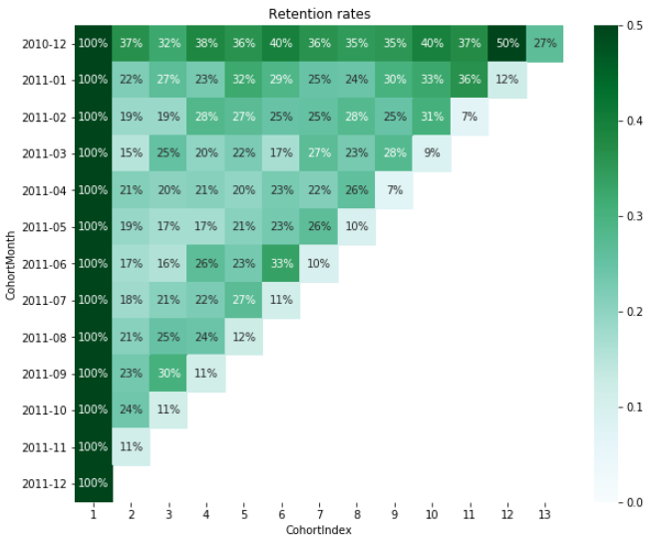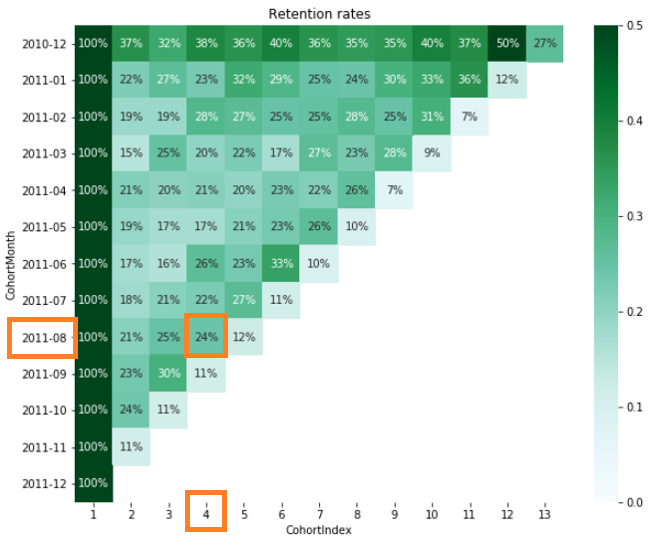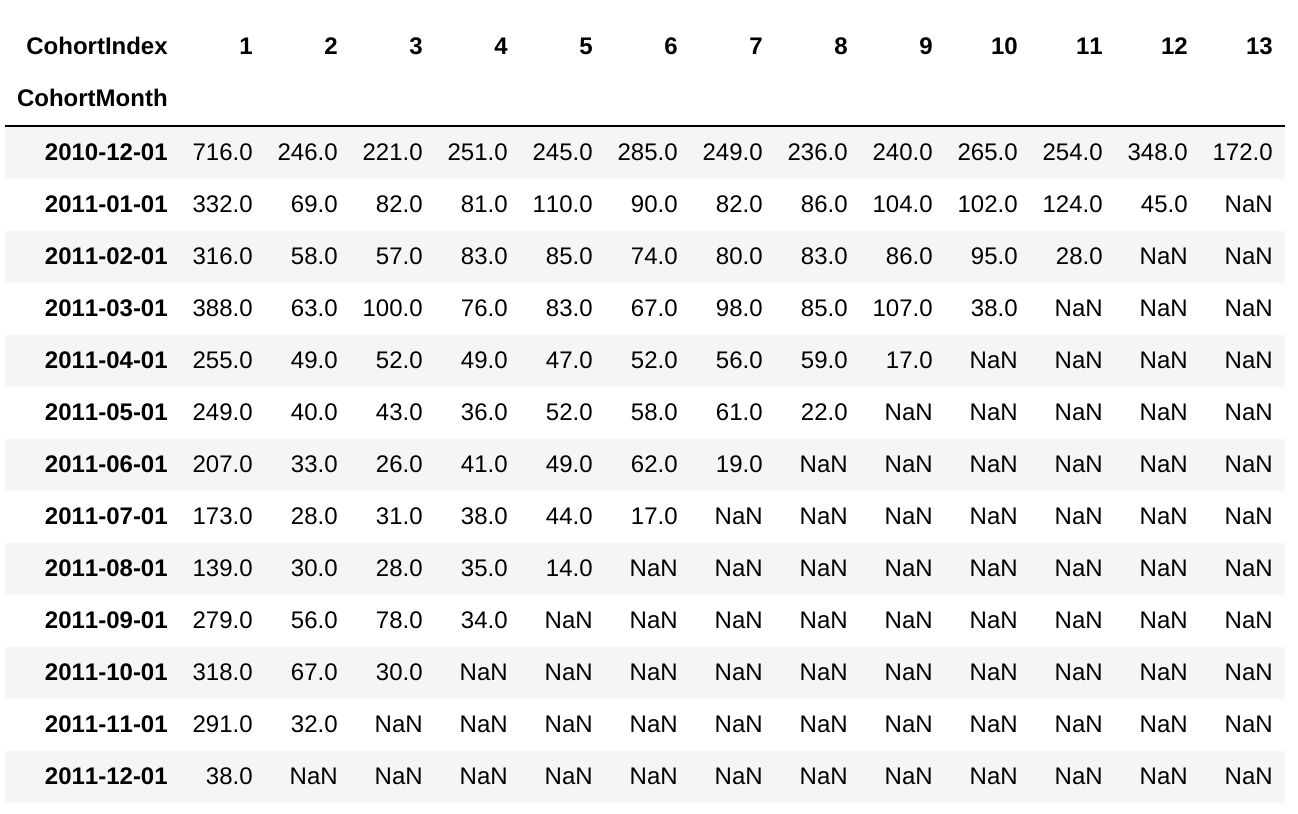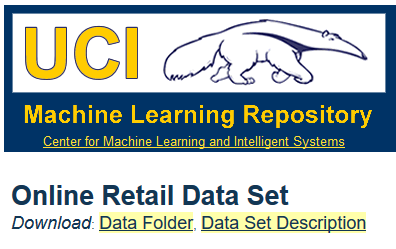Cohort analysis
Customer Segmentation in Python

Karolis Urbonas
Head of Data Science, Amazon
Cohort analysis heatmap
Rows:
- First activity
- Here - month of acquisition
Columns:
- Time since first activity
- Here - months since acquisition

Cohort analysis heatmap
Rows:
- First activity
- Here - month of acquisition
Columns:
- Time since first activity
- Here - months since acquisition

Online retail data
Over 0.5 million transactions from a UK-based online retail store.
We will use a randomly sampled 20% subset of this dataset throughout the course.
Top 5 rows of data
online.head()

Assign acquisition month cohort
def get_month(x): return dt.datetime(x.year, x.month, 1)online['InvoiceMonth'] = online['InvoiceDate'].apply(get_month)grouping = online.groupby('CustomerID')['InvoiceMonth']online['CohortMonth'] = grouping.transform('min')online.head()
Extract integer values from data
Define function to extract year, month and day integer values.
We will use it throughout the course.
def get_date_int(df, column):
year = df[column].dt.year
month = df[column].dt.month
day = df[column].dt.day
return year, month, day
Assign time offset value
invoice_year, invoice_month, _ = get_date_int(online, 'InvoiceMonth') cohort_year, cohort_month, _ = get_date_int(online, 'CohortMonth')years_diff = invoice_year - cohort_year months_diff = invoice_month - cohort_monthonline['CohortIndex'] = years_diff * 12 + months_diff + 1 online.head()
Count monthly active customers from each cohort
grouping = online.groupby(['CohortMonth', 'CohortIndex'])cohort_data = grouping['CustomerID'].apply(pd.Series.nunique)cohort_data = cohort_data.reset_index()cohort_counts = cohort_data.pivot(index='CohortMonth', columns='CohortIndex', values='CustomerID')print(cohort_counts)

Your turn to build some cohorts!
Customer Segmentation in Python




